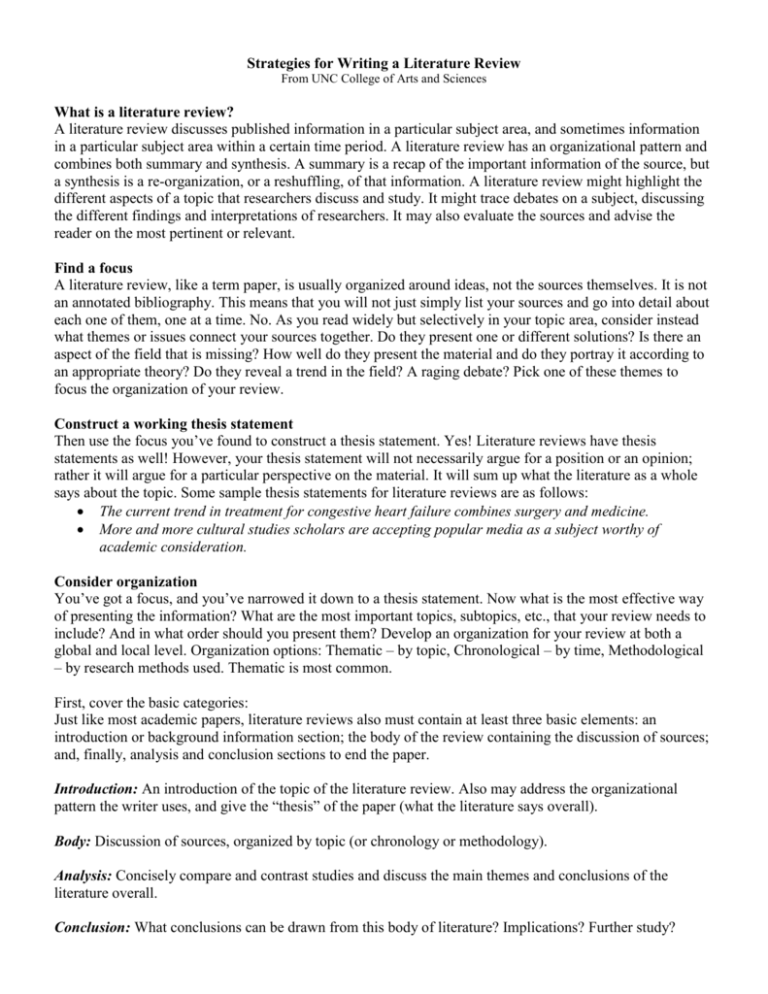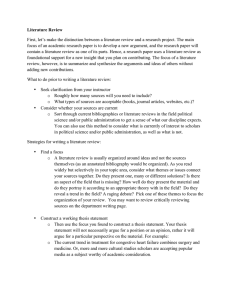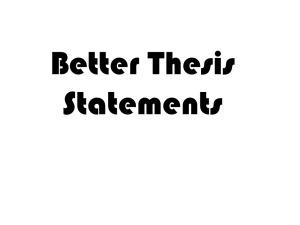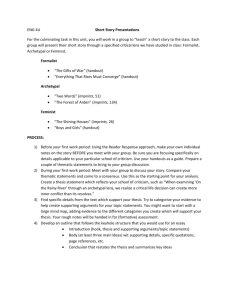Strategies for Writing a Literature Review
advertisement

Strategies for Writing a Literature Review From UNC College of Arts and Sciences What is a literature review? A literature review discusses published information in a particular subject area, and sometimes information in a particular subject area within a certain time period. A literature review has an organizational pattern and combines both summary and synthesis. A summary is a recap of the important information of the source, but a synthesis is a re-organization, or a reshuffling, of that information. A literature review might highlight the different aspects of a topic that researchers discuss and study. It might trace debates on a subject, discussing the different findings and interpretations of researchers. It may also evaluate the sources and advise the reader on the most pertinent or relevant. Find a focus A literature review, like a term paper, is usually organized around ideas, not the sources themselves. It is not an annotated bibliography. This means that you will not just simply list your sources and go into detail about each one of them, one at a time. No. As you read widely but selectively in your topic area, consider instead what themes or issues connect your sources together. Do they present one or different solutions? Is there an aspect of the field that is missing? How well do they present the material and do they portray it according to an appropriate theory? Do they reveal a trend in the field? A raging debate? Pick one of these themes to focus the organization of your review. Construct a working thesis statement Then use the focus you’ve found to construct a thesis statement. Yes! Literature reviews have thesis statements as well! However, your thesis statement will not necessarily argue for a position or an opinion; rather it will argue for a particular perspective on the material. It will sum up what the literature as a whole says about the topic. Some sample thesis statements for literature reviews are as follows: The current trend in treatment for congestive heart failure combines surgery and medicine. More and more cultural studies scholars are accepting popular media as a subject worthy of academic consideration. Consider organization You’ve got a focus, and you’ve narrowed it down to a thesis statement. Now what is the most effective way of presenting the information? What are the most important topics, subtopics, etc., that your review needs to include? And in what order should you present them? Develop an organization for your review at both a global and local level. Organization options: Thematic – by topic, Chronological – by time, Methodological – by research methods used. Thematic is most common. First, cover the basic categories: Just like most academic papers, literature reviews also must contain at least three basic elements: an introduction or background information section; the body of the review containing the discussion of sources; and, finally, analysis and conclusion sections to end the paper. Introduction: An introduction of the topic of the literature review. Also may address the organizational pattern the writer uses, and give the “thesis” of the paper (what the literature says overall). Body: Discussion of sources, organized by topic (or chronology or methodology). Analysis: Concisely compare and contrast studies and discuss the main themes and conclusions of the literature overall. Conclusion: What conclusions can be drawn from this body of literature? Implications? Further study?











